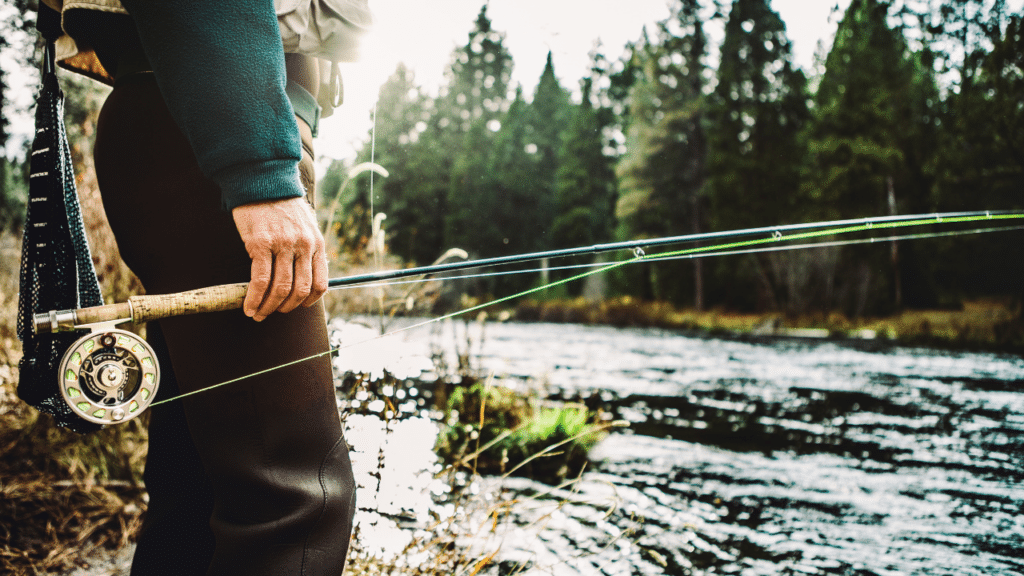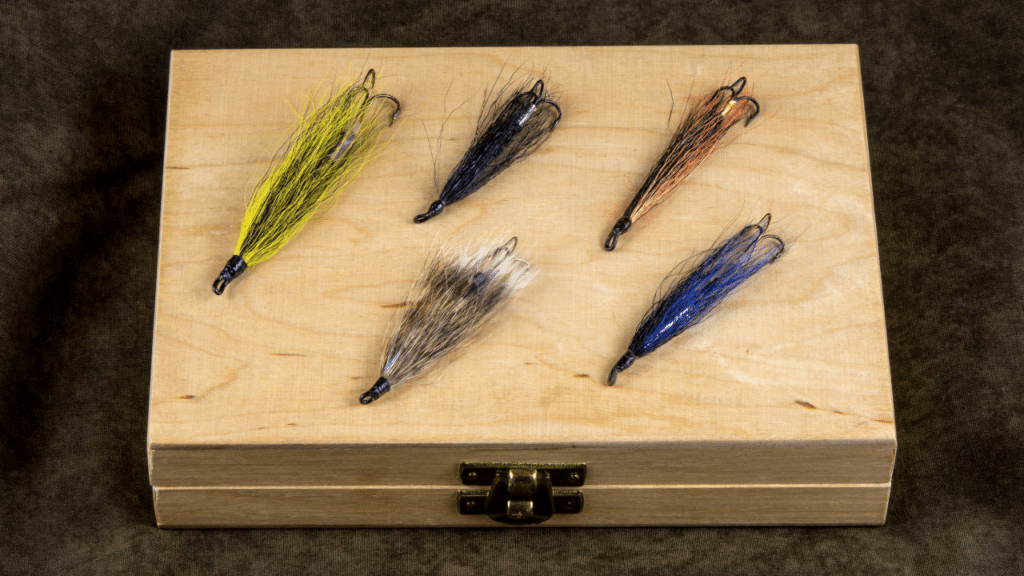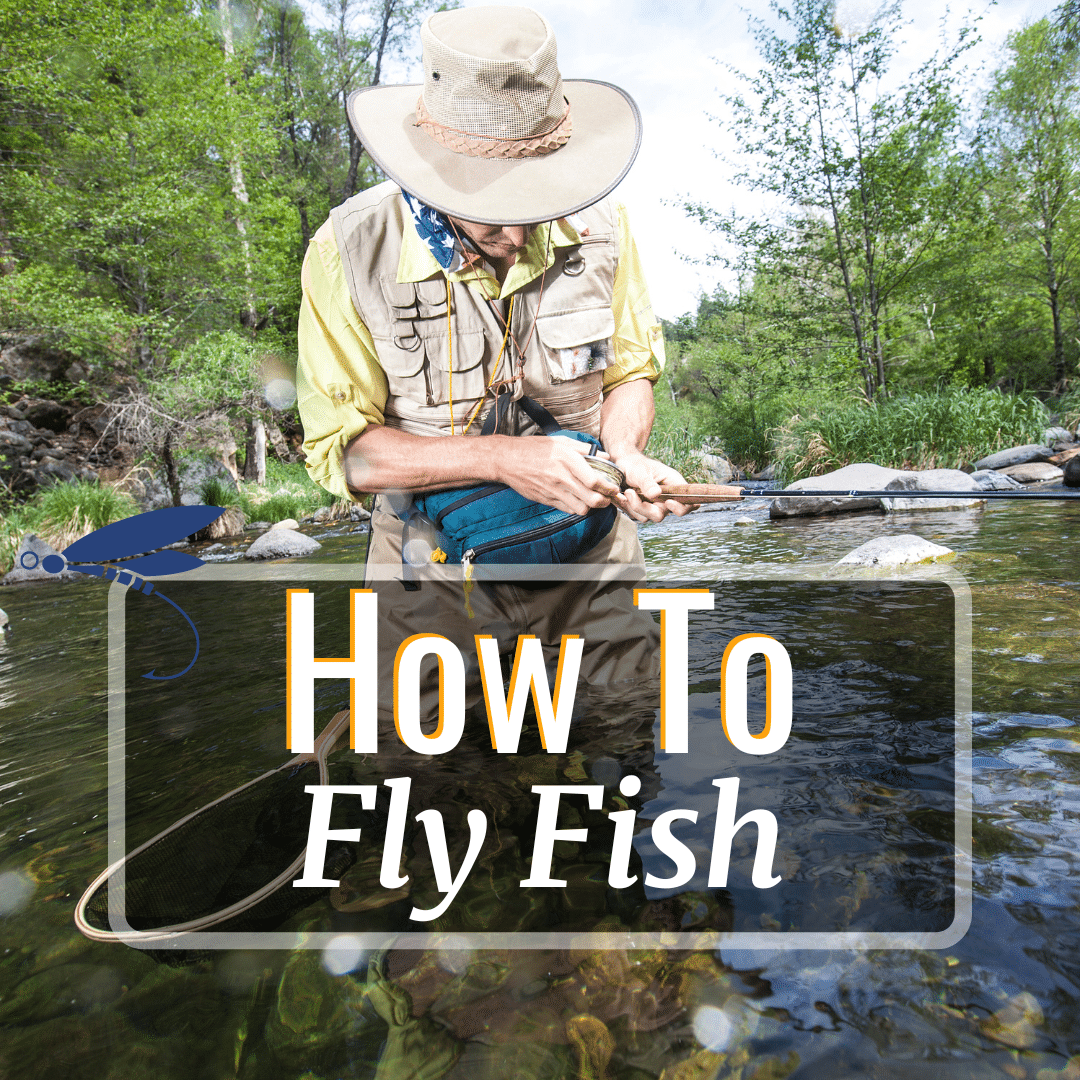
Looking to learn how to fly fish? We’ve got you covered!
Fly fishing is quite a different experience from regular fishing. Everything from the casting, to the lures, and even fish fighting methods are quite different.
Even intermediate fishermen will need to take time to learn the fly fishing basics, so beginners can rest easy knowing they’re not too far behind in their fly fishing journey.
Whether you’re a pro fisherman or beginner fly angler though, this guide will teach you everything you need to get started fly fishing.
Let’s jump right into it!
What Fly Fishing Gear Do Beginners Need?
There’s a super wide variety of gear to choose from, and this can be overwhelming when you’re just starting out. That’s why we compiled this list of only the essential gear you’ll need.
Fly Fishing Gear You Need:
Main Gear:
- Fly Rod
- Fly Reel
- Fly Line
- Leader and Tippet
- Flies
Other Essential Gear:
- Waders and Boots
- Fly Fishing Vest or Pack
- Nippers: Useful for cutting your line when changing flies or tippets.
- Forceps: Handy for removing hooks from fish or yourself.
- Floatant: Keeps your dry flies from sinking.
- Split shot: Adds extra sink to your nymphs or streamers.
- Indicators: Helps you detect strikes when fishing nymphs or streamers.
- Net: Assists in landing and releasing fish safely.
- Polarised Sunglasses
What Size Fly Rod Is Best For Beginners?
When choosing your fly rod size, you need to take into account both the fly rod length and weight. In this case, weight refers to the weight of the fly line that the rod is designed to use, not of the rod itself. So for example, a 9-foot 5-weight rod means a 9-foot long rod that can cast a 5-weight fly line.
In general, 9-foot 5-weight is the best starting point. It offers a good balance of accuracy, line control, and casting distance. It’s also versatile, being able to fish both large trout and small panfish, and handle both freshwater and saltwater fly fishing.
Choosing Fly Rod Weights
As mentioned above, a 5-weight rod is meant for use with a 5-weight line. This means the real question is what weight line you’re using.
Note that as your rod weight increases, its size and actual weight also increases, so you’ll actually be using a heavier fly rod.
Here’s a guide to fly rod weights:
1-3 weight fly rod work well for small streams, small flies, and small fish like brook trout, bluegill, or crappie. Basically, all things small.
4-5 weight fly rods are more versatile and well-suited for newbies. They’ll get the job done for most freshwater applications. They’re also compatible with all flies, from wet flies to streamers. This also means you can go fly fishing for all the small and medium sized fishes.
6-7 weight fly rods are a must for bigger bodies of water, larger flies, and larger species like salmon and carp.
8-10 weight fly rods were made for fishing the largest species like bluefish or tuna. You’ll be able to cast huge flies a good distance, even when there are strong winds.
What Is The Best Fly Line For A Beginner?
Fly fishing lines are thicker and quite often bright in colour, as compared to normal fishing line. The thing with fly fishing is that when you cast, it’s the weight of the fly line that propels the line out, not the weight of the lure. That’s why fly lines need to be heavier.
Follow the rod weight guide above to choose your line weight.
What Are The Best Fly Fishing Flies For Beginners?

Unlike normal fishing lures, flies are made to imitate smaller creatures like insects and their larvae. There are dry flies, wet flies, nymphs, and streamers.
Here are a few flies that I use on a regular basis:
- Adams Dry Fly
- Woolly Bugger
- Pheasant Tail Nymph
- Elk Hair Caddis
Fly Fishing Setup – Putting it all together
Here are the steps to connecting all the pieces together:
- Put the reel onto the rod by sliding the reel foot into the reel seat. Then, tighten the rings
- Thread your fishing line through the first guide at the bottom all the way to the top
- Tie the thicker end of the leader to the fly line using a loop to loop knot
- Tie the tippet to the other end of the leader using a surgeon’s knot
- Finally, attach the fly to the tippet using the improved clinch knot
Steps To Fly Fish
Now, it’s finally time to start putting your setup to use.
1. The Basic Fly Fishing Cast
- Start by holding your rod extended out in front of you. Then, flick it backwards by bringing it from a horizontal pointing forward position, to point towards the sky
- Give the line a bit of time to fully extend, then flick it forward
The basic overhead cast is quite simple, so even beginners shouldn’t have too much trouble with it.
2. How To Fight A Fish On A Fly Rod
With fly fishing, when you fight the fish, it’s not so much about the reel as it is about the rod. You’ll be using the rod to control the fish, and here’s how you do it:
- As usual, you’ll need to set the hook, although instead of a sharp upwards lift, you should now lift upwards with steady pressure.
- Now, let the fish run, but keep some pressure on the fish. Make use of your rod’s flexibility to follow the fish’s movements, keeping a slight bend in the rod at all times.
- Once the fish is tired out, then start to reel it in slowly. Make sure to maintain pressure at all times. This will prevent the fish from shaking the hook loose.
3. Find the perfect spot and time
To find the perfect spot, you need to break each part of your river or stream down. In general, there are three parts – riffles, runs, and pools.
Riffles are shallow areas where water is flowing over rocks, which creates a choppy flow. Insects often flow through these areas, thus attracting fish. Look out for riffles that are flowing more slowly, as this is where fishes tend to wait for food.
Runs are another great place to fly fish. These are the deeper areas just after riffles, and because they’re slower-flowing and oxygenated, fish also like to stay around these areas.
Finally, pools are the deepest and slowest flowing parts, and fish, as you’d expect, like to rest in these areas.
As for timing, there isn’t a need to complicate things. Early morning and late evening are the best times to fly fish.
Final Tips
Make sure to imitate aquatic insects that the fishes are eating. Whichever bugs they’re eating, make sure your fly looks like that.
Choose the right rod. While a 9ft 5wt rod is a great all-around option, matching your rod to the size of your waters and flies will help you catch more fish. For smaller water bodies and delicate presentations, 3 weight or 4 weight rods are better suited. Similarly, for larger fish and heavier flies, go for a 6 weight or 7 weight rod.
Now that you’ve got everything you need to start fly fishing, best of luck on your fly fishing adventures!

